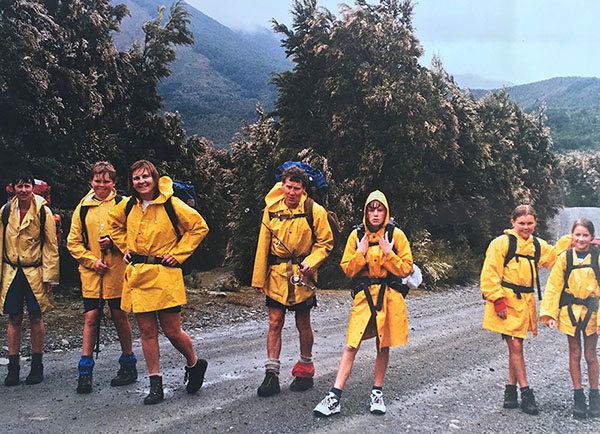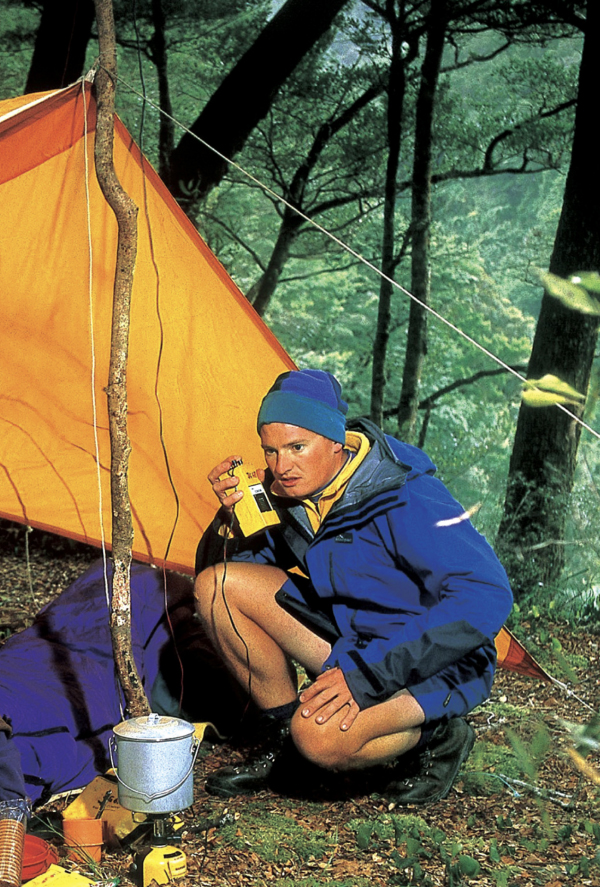How tramping has changed over 30 years
Enjoying wild and natural environments, savouring the simple pleasure of walking, and sharing the experience with friends or family: on the surface tramping has not changed much since 1992, when the Department of Conservation (DOC) introduced the ‘Great Walks’ concept.
As part of TourismNZ's 30th Anniversary of the Great Walks, we decided to share some stories to celebrate this incredible aspect of New Zealand's tramping culture. In this story we see how tramping and the way people prepare has changed over the years.
Header photo: Kepler Track, Zhi Yap Yuen
On another level, change has been constant. In 1992, the variety of outdoor gear was vastly more limited than today. Weather forecasting was less accurate and less location specific. Information about walks was largely restricted to printed material.
Let’s take a walk back in time to 1992 to find out what’s changed. DOC was only five years old, and the popularity of hiking was growing among New Zealanders. With excellent huts and tracks, a great variety of scenery and no access fees, New Zealand has a reputation as the one of the planet’s best hiking destinations. While the internet was hardly new, compared to now the amount of online information was tiny. In 1992, international hikers were far more likely to have consulted Lonely Planet’s guide Tramping in New Zealand.
When DOC rebranded and upgraded the country’s most popular tracks as ‘Great Walks’, they included the Milford, Routeburn, Heaphy, Kepler, Abel Tasman, Tongariro Northern Circuit and Lake Waikaremoana. The popularity of mountain biking was rapidly growing, but biking was strictly banned in national parks and all Great Walks. Fast forward to 2022, and we have seasonal biking on the Heaphy, and the purpose-built dual tramping-MTB Paparoa Great Walk.
By 1992, the chequered woollen Swandris of the previous decades had been largely replaced by synthetics like polypropylene that, while lighter and quicker to dry, did get quite smelly. Hybrid fabrics combining wool and synthetics were not common. And down jackets? Bulky, billowing duvets worn only by mountaineers. Breathable rain jackets made of Gortex were just coming onto the market, but many people still wore sweaty PVC parkas. Down sleeping bags were usually heavy too, with few light options.

1990s tramping PVC parkas | Dave Watson
Chunky leather boots, while durable and waterproof, were heavy and slow to dry – with none of today’s huge variety of lightweight boots and trail shoes.
While in 1992 a few diehard hikers still carried external-frame packs, most people had converted to more comfortable internal frame packs. However, even these were usually made of durable but heavy canvas. No super-light packs existed.
Tent quality was pretty good in 1992, with tunnel tents capable of handling the worst New Zealand tempests. But a two-person tent weighed 3-4kg; there were no super-light tents of half that weight. Thermarests were available, but expensive, and most hikers still carried a thin foam roll mat. Down-filled, lilo-shaped super-comfy mats lay in the future.
By 2022, sophisticated online Great Walk hut booking systems have eliminated the need for taking tents, unless you choose to camp. And each night hut wardens will give you an updated forecast, specific to the national park you’re hiking through. Forecasts predict rainfall to the hour, giving the opportunity to start early and avoid that late squall.
However, no amount of advanced gear and technology can change the reality that most of New Zealand’s Great Walks go through rugged mountainous terrain with highly tempestuous weather. Many modern synthetics are not warm when wet. Wool still works, and in the form of merino has made a big comeback. Keep a bit of fat in the system – take extra clothing and perhaps carry an emergency dehydrated meal (many delicious, nutritious ones are now available). The only certainty of mountain weather is that it changes fast.

Tramper using a Mountain Radio | Bob Moscrip
Back in 1992, PLBs (EPIRBs) didn’t exist. If something went wrong, a hut warden you might have requested help on their radio, but usually someone had to walk out and raise the alarm. Now, with GPS-enabled PLBs, technology has advanced to allow an injured hiker to be located more quickly.
With the quality of information, booking, gear and technology now available, hiking a Great Walk has never been better. But ensuring you have a great time still means planning ahead, being prepared for any weather and taking the right gear. Go light, but pack smart.
Celebrating the Great Walks
As part of TourismNZ's 30th Anniversary of the Great Walks, we decided to share some stories to celebrate this incredible aspect of New Zealand's tramping culture and showcase other incredible options to up-skill and explore. Read the other stories in the series:
- Unmissable highlights on NZ's Great Walks
- 9 Day Walks to challenge yourself
- 5 Short Walks to stretch your legs while road tripping around the South Island
- Alternative 'Off-The-Beaten-Track' walks
Prepare for your adventure
- Do your homework before leaving home (plan, prepare, book)
- Pack light, but smart (taking into account the season)
- Plan for contingencies (take a spare meal and warm clothes)
- Watch the weather forecast, and make a Plan B if the weather is unsuitable for your trip
- Take or hire a Personal Locator Beacon (PLB)
Using our free Plan My Walk app can help you plan and prepare for your next New Zealand walk. Learn about the track and check for any alerts, read other people’s track reviews, check the weather, get help from the suggesting gear list. Download it, or head to the website planmywalk.nz.
Story by Shaun Barnett